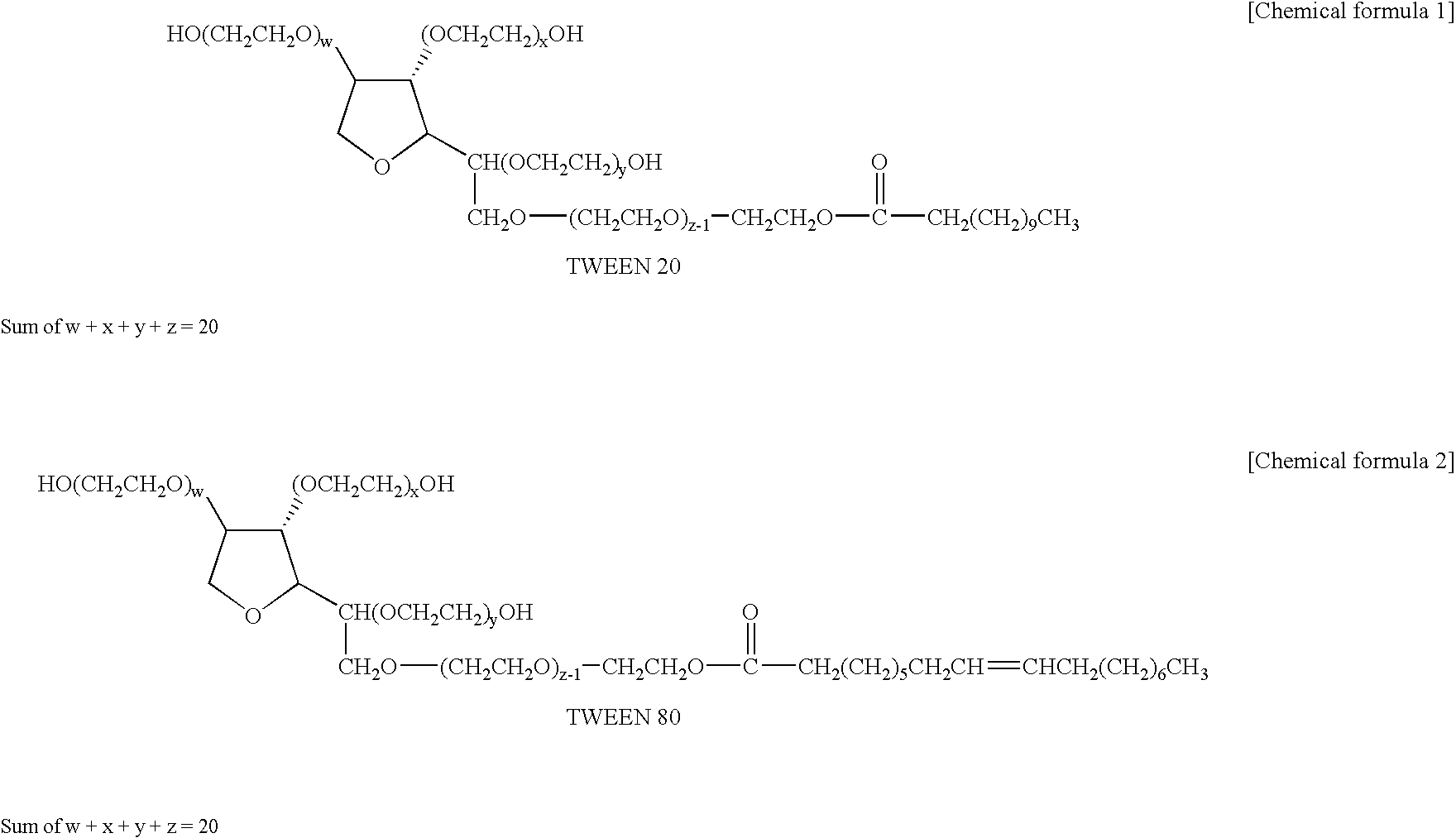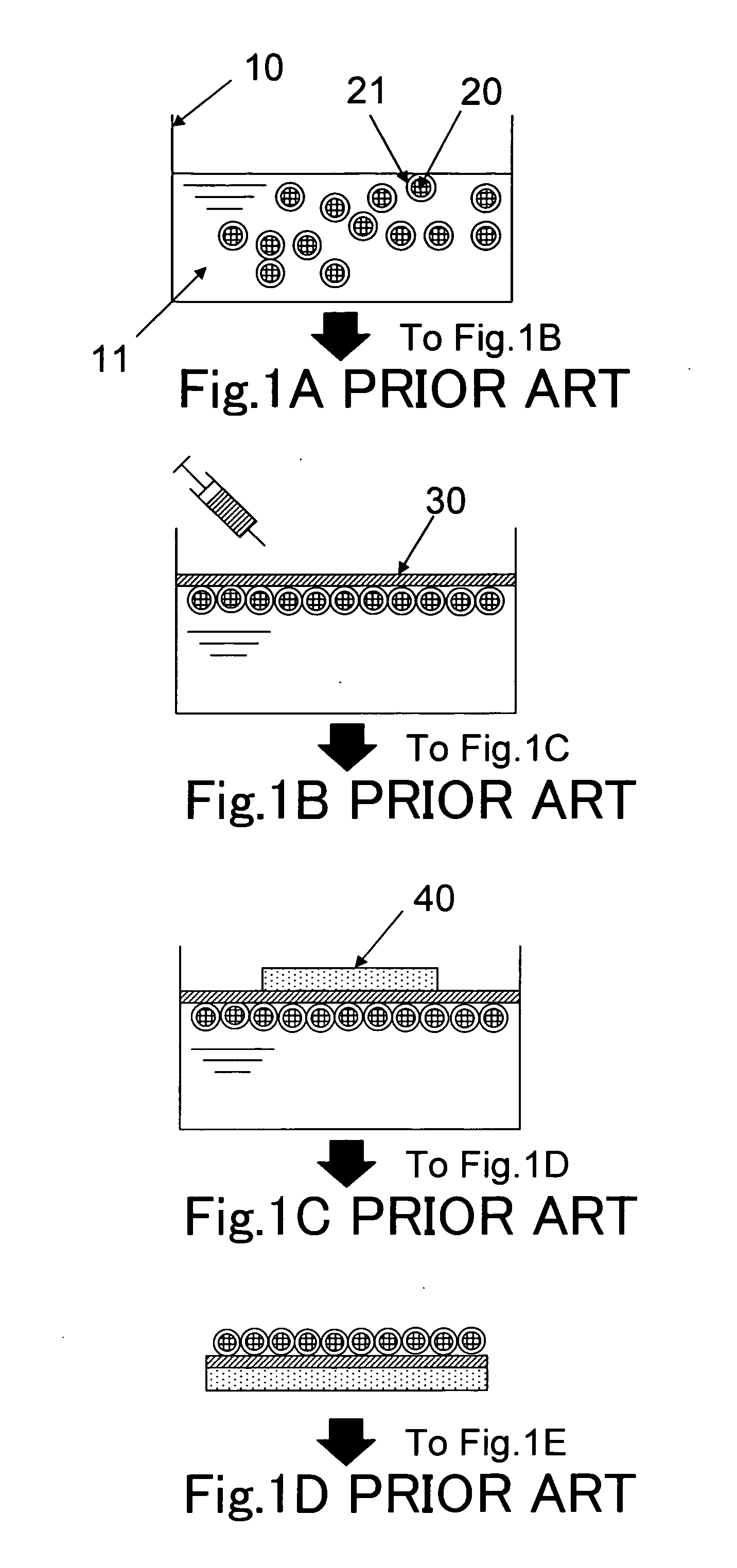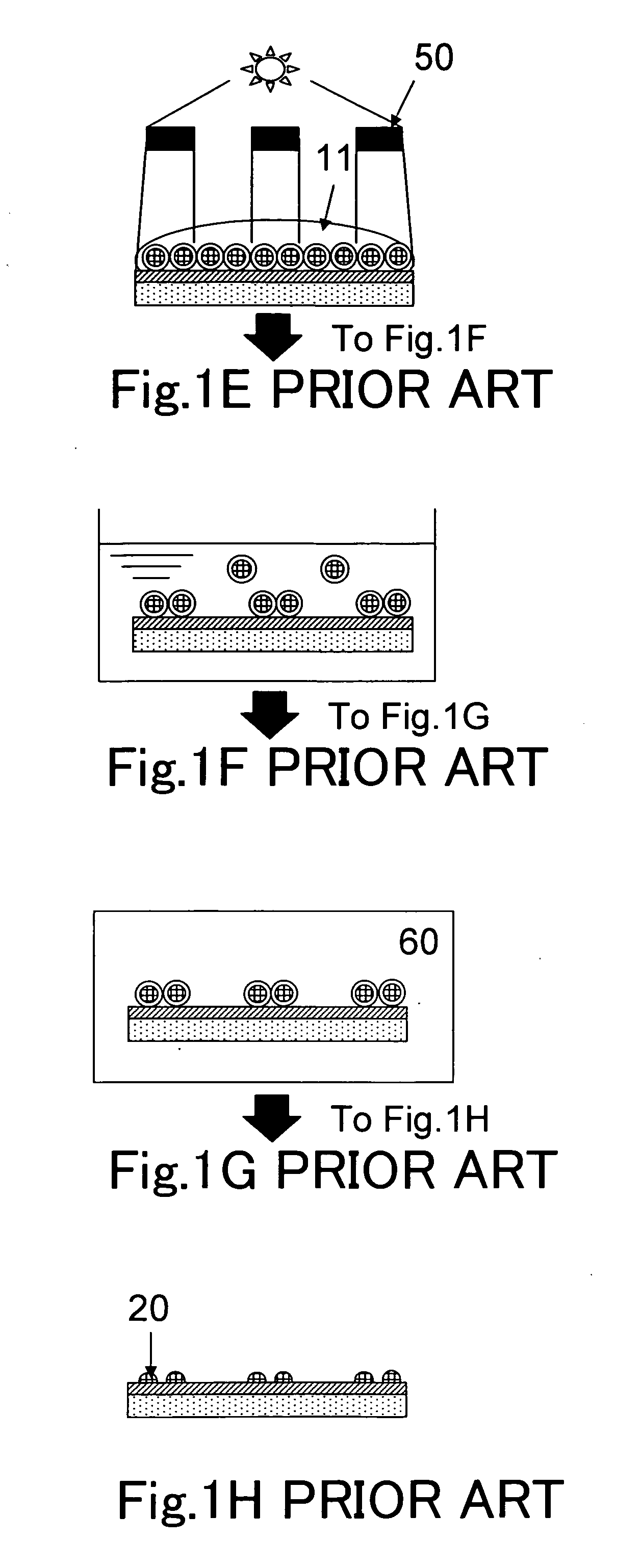Method of arrangement of titanium-binding ferritin and inorganic particles
- Summary
- Abstract
- Description
- Claims
- Application Information
AI Technical Summary
Benefits of technology
Problems solved by technology
Method used
Image
Examples
embodiment 1
[0107] Embodiment 1 of the present invention demonstrates a method for arranging titanium-binding ferritin and inorganic particles on a substrate. In this Embodiment, a Pt part and a Ti part are formed on the substrate.
[0108] Specific examples of this Embodiment will be shown by way of Examples below, and the effect thereof will be explained with reference to Comparative Examples.
example 1
[0109] First, FIG. 9A shows a schematic view illustrating an experiment in which TBF 310 including modification of the surface thereof with a peptide 302 which specifically adsorbs to Ti, and including Fe2O3 301 therein was arranged on a Ti substrate 200 with a platinum membrane (Pt) 400 formed in a part of the surface thereof.
[0110] In Example 1, the inorganic particles were arranged on the substrate as in the followings.
[0111] TBF 310 including Fe2O3 301 therein was adjusted to give the concentration of 2 mg / ml with a buffer solution (10 mM Tris-HCl, pH 8.0). On the Ti substrate 200 having a platinum membrane (Pt) formed in a part of the surface was added the TBF solution dropwise. After leaving to stand at room temperature for 1 hour, it was washed with pure water. After washing, the substrate was subjected to a heat treatment according to the method described above, thereby allowing Fe2O3 301 to be fixed on the substrate.
[0112]FIG. 9B shows a scanning transmission electron mi...
example 2
[0113] In Example 2, Tween 20 manufactured by ICI Inc., which is a nonionic surface activating agent was added in an amount of 0.5 v / v % to the buffer solution. As a result of a similar operation to that in Example 1, it was verified that TBF 310 did not adsorb to the Pt membrane 400, but almost all thereof specifically adsorbed to the Ti substrate 200. In other words, addition of Tween 20 improved selective adsorptivity of TBF to the Ti substrate.
PUM
| Property | Measurement | Unit |
|---|---|---|
| Fraction | aaaaa | aaaaa |
| Fraction | aaaaa | aaaaa |
| Concentration | aaaaa | aaaaa |
Abstract
Description
Claims
Application Information
 Login to View More
Login to View More - R&D
- Intellectual Property
- Life Sciences
- Materials
- Tech Scout
- Unparalleled Data Quality
- Higher Quality Content
- 60% Fewer Hallucinations
Browse by: Latest US Patents, China's latest patents, Technical Efficacy Thesaurus, Application Domain, Technology Topic, Popular Technical Reports.
© 2025 PatSnap. All rights reserved.Legal|Privacy policy|Modern Slavery Act Transparency Statement|Sitemap|About US| Contact US: help@patsnap.com



